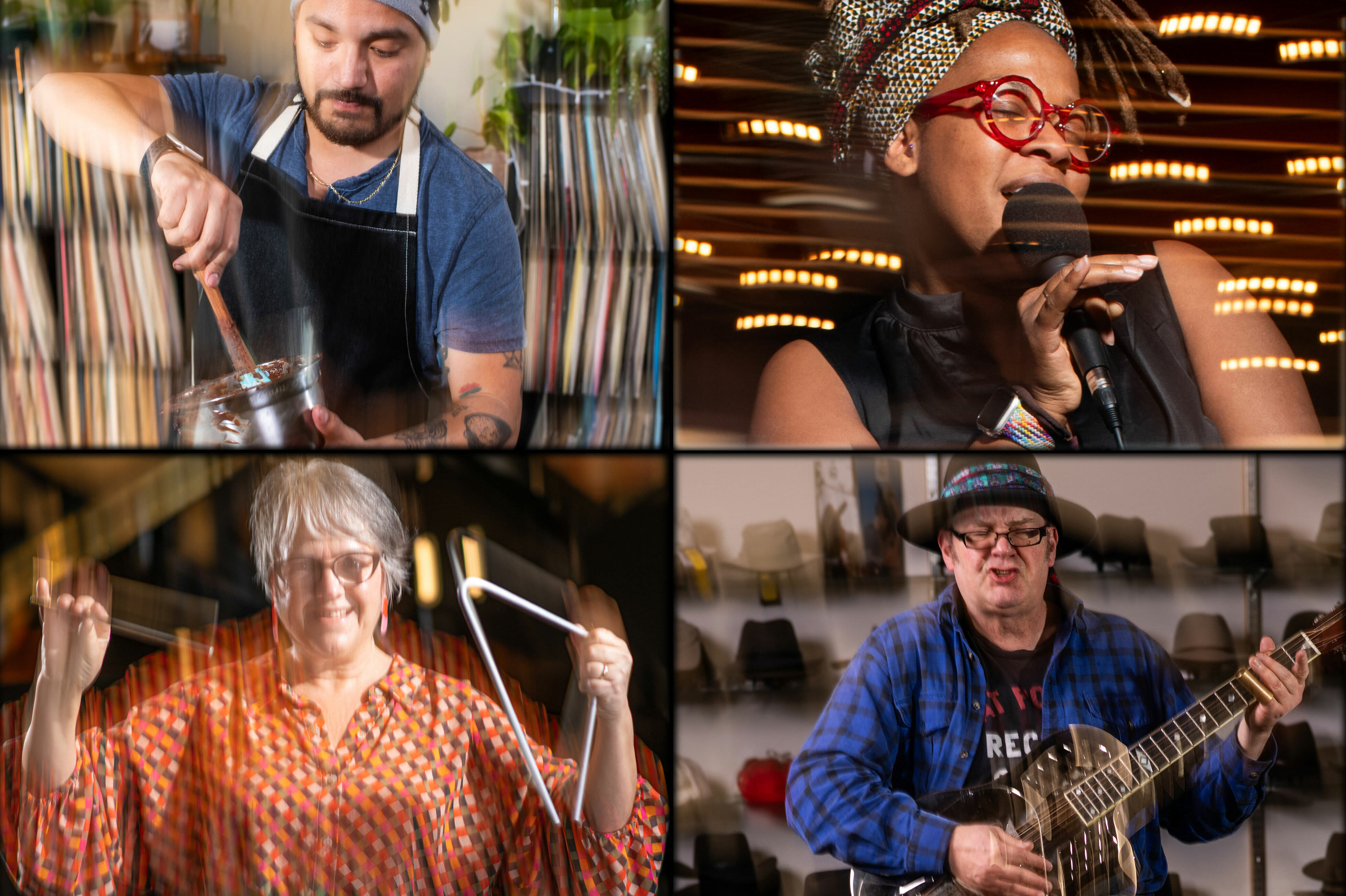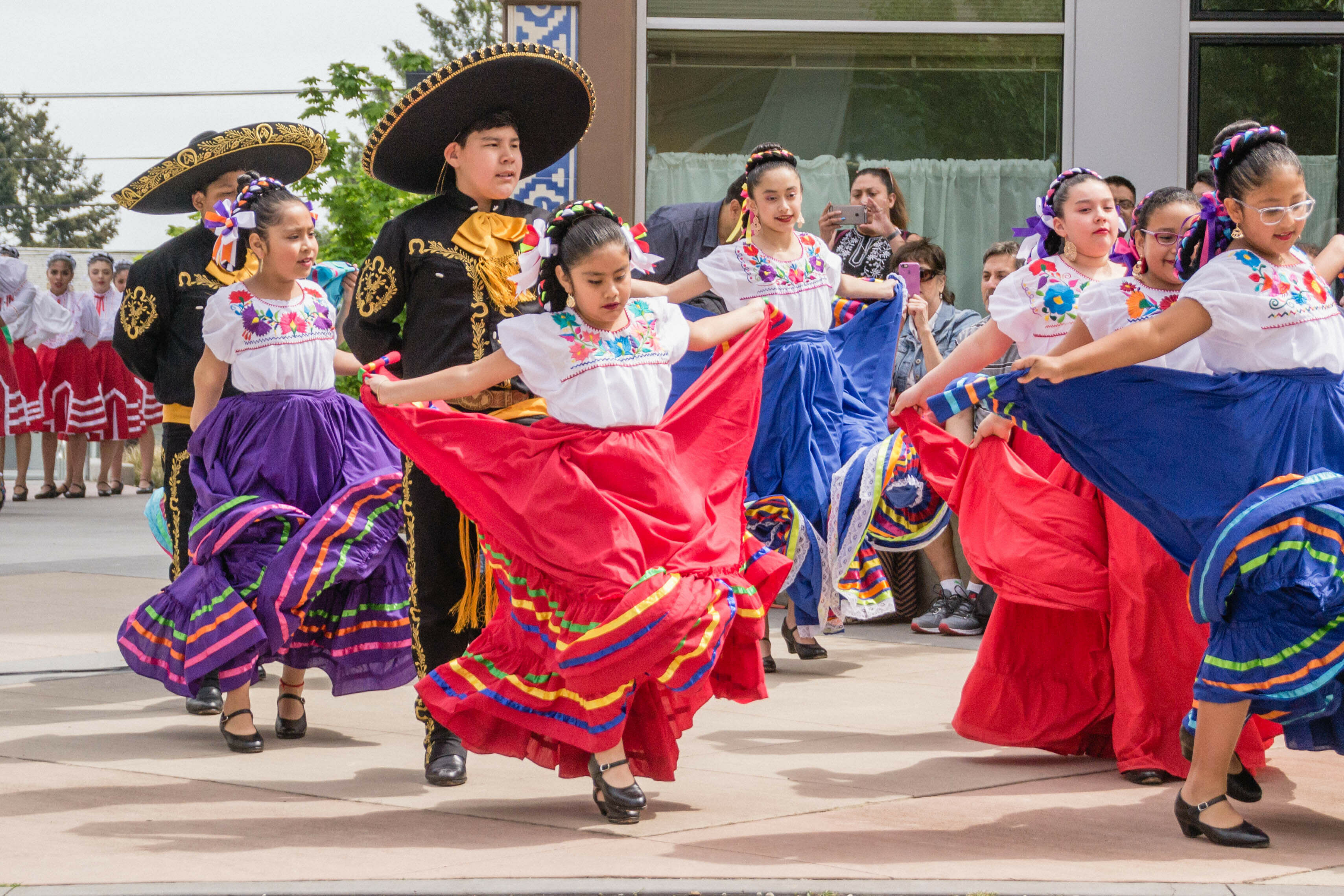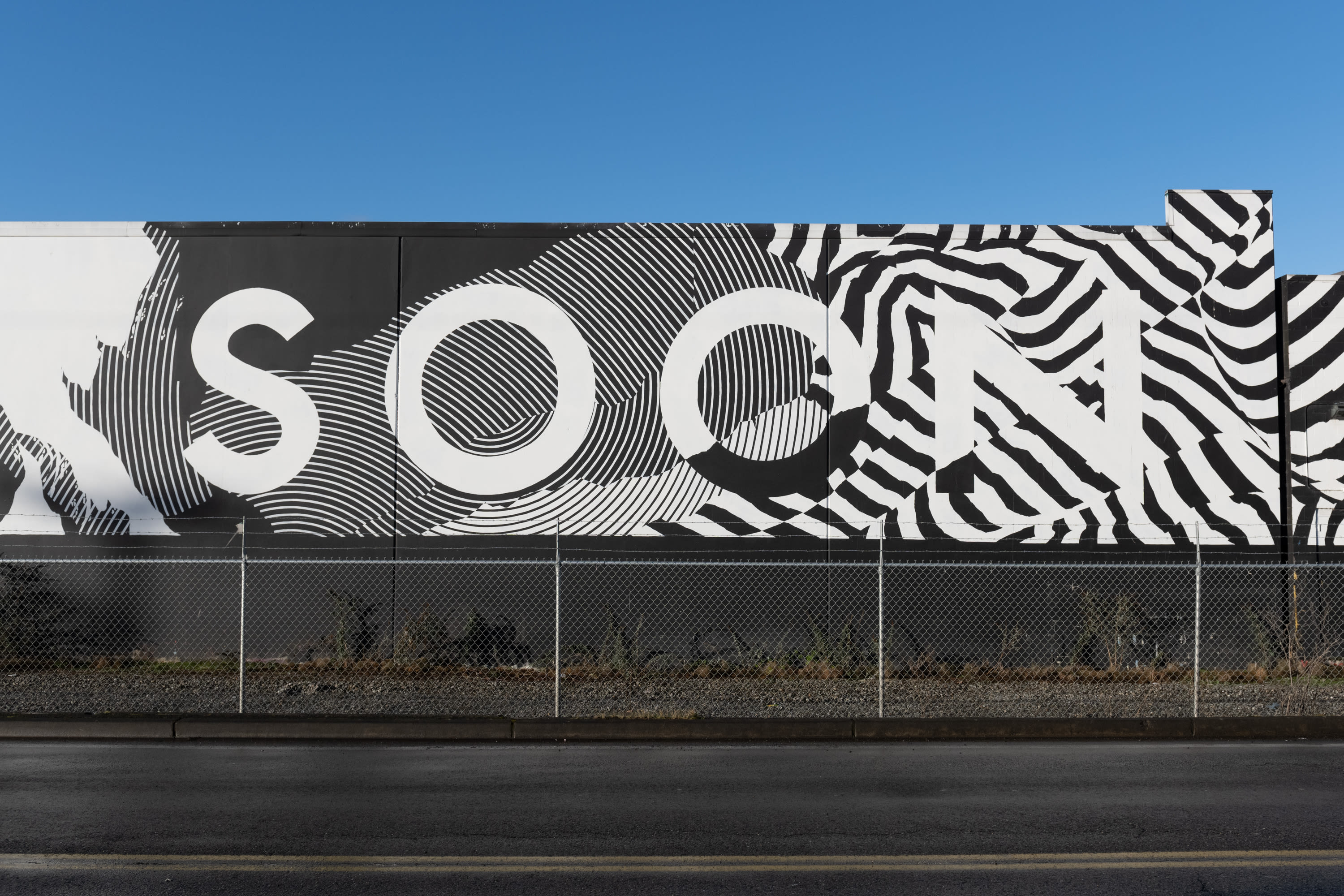
In The Public Eye: A Look at Seattle Through Art Installations
The murals that run along the SoDo light rail track are the result of 60 artists collaborating over the course of three summers. Pictured: Georgia Hill, I'll Be There Soon (2018) from the King County Public Art Collection.
Navigating public spaces these past two years has felt a lot like being trapped in a labyrinth; just when you seem to be gaining momentum, a dead end. Just when you feel the path has grown predictable, manageable, it curves or doubles over on itself in some unforeseen way.
As we trickle back into the world, in fits and starts, it’s worth reflecting on what has changed—and who defines these places we occupy together. A new guard of public art installations, including an actual labyrinth, has appeared, perhaps without our even noticing. And once-familiar sights, like Rachel the Piggy Bank and her placid smile of greeting, feel more like faded memories of an old life, recognizable landmarks in an unrecognizable world. The strand that links them all together is a desire to preserve and commune with the past in service of reimagining our future.
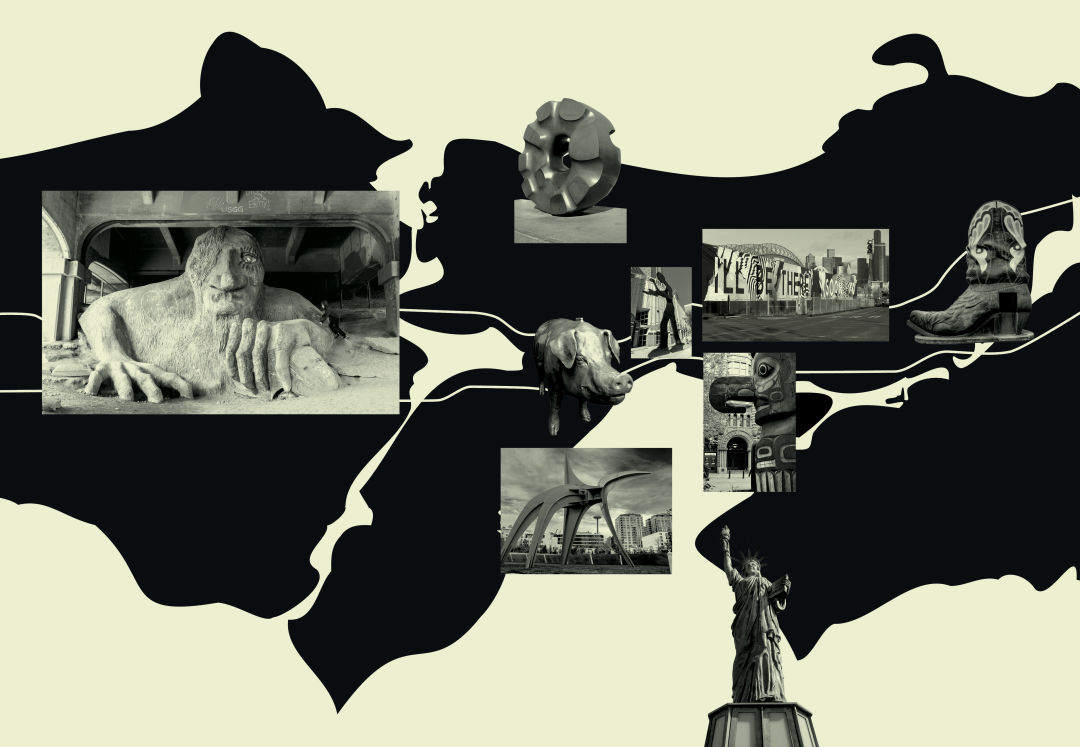
Image: Seattle Met Composite
The Old Guard
A city is rendered distinct by features innumerable, some too abstract to articulate, others as tangible as a skyline. These installations have stood for decades—in the case of the totem pole in Pioneer Square, well over a century—and are integral to our physical and cultural landscape.
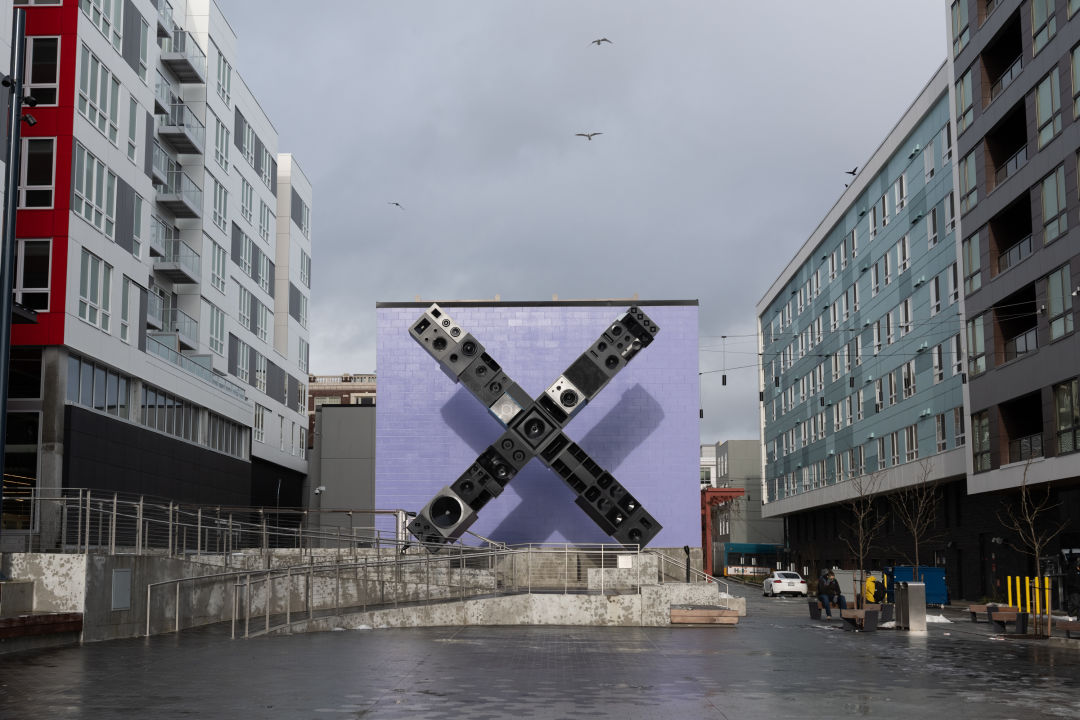
AIDS Memorial Pathway
“X” marks the spot across from Cal Anderson Park. In the wake of a rare Seattle winter storm, andimgonnamiss-everybody, 20 feet tall and imposing against a backdrop of lavender brick, might be capped with snow. More likely, the stacked speakers that form the sculpture glisten with rain. But it continues to bear witness year-round, sentinel to the memory of those lost to AIDS. The sculpture, an homage to the bars and clubs in which Seattle’s gay community sought refuge, is a focal point of the AIDS Memorial Pathway, unveiled last summer, although artist Christopher Paul Jordan emphasizes that all elements of the Pathway are of equal importance, a cohesive whole.
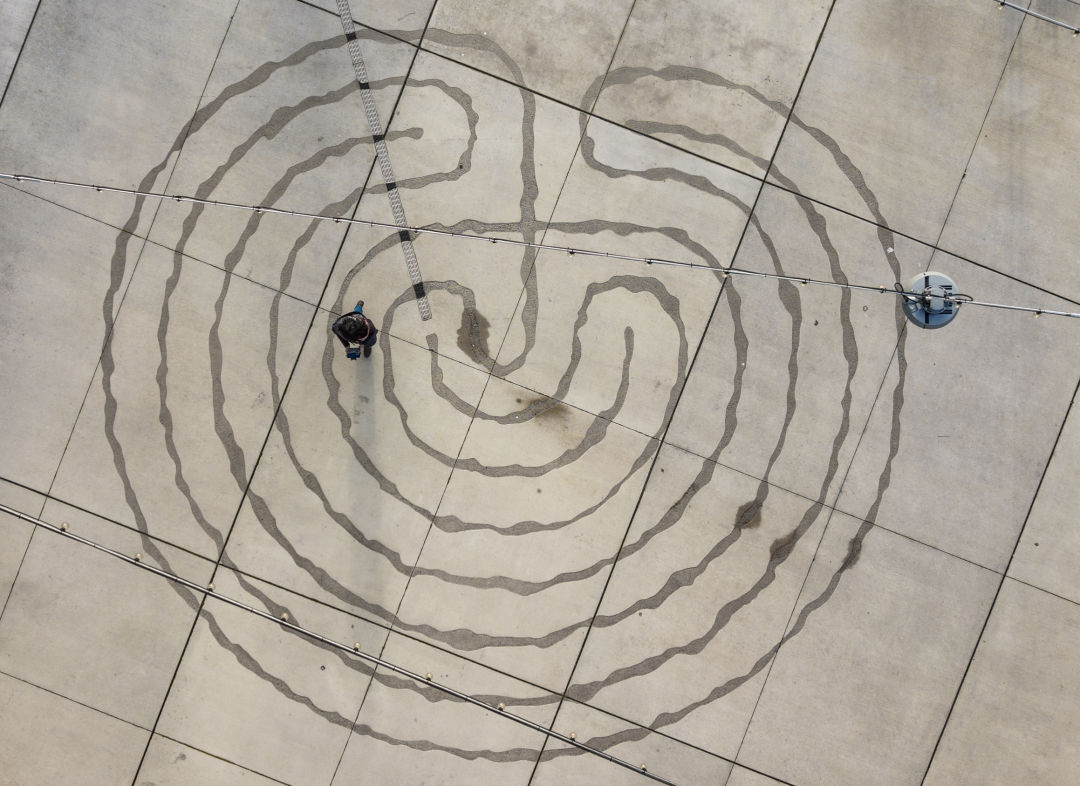
Labyrinth
The 32-foot by 35-foot whorl outside the National Nordic Museum may not resonate with most people’s conception of a labyrinth; the carving’s two-dimensional format does not, after all, accommodate a minotaur. But it draws from real traditions: Often found in Scandinavian fishing villages, a classic Nordic labyrinth is an arrangement of rocks upon the ground used for ritualistic and meditative practices, ranging from warding off trolls to marrying off virgins. Designed by Gordon Huether, the museum’s etching is based on the traditional seven-ring Cretan labyrinth. Its grounded nature doesn’t make it any easier to navigate than a three-dimensional counterpart; it’s all about perspective.
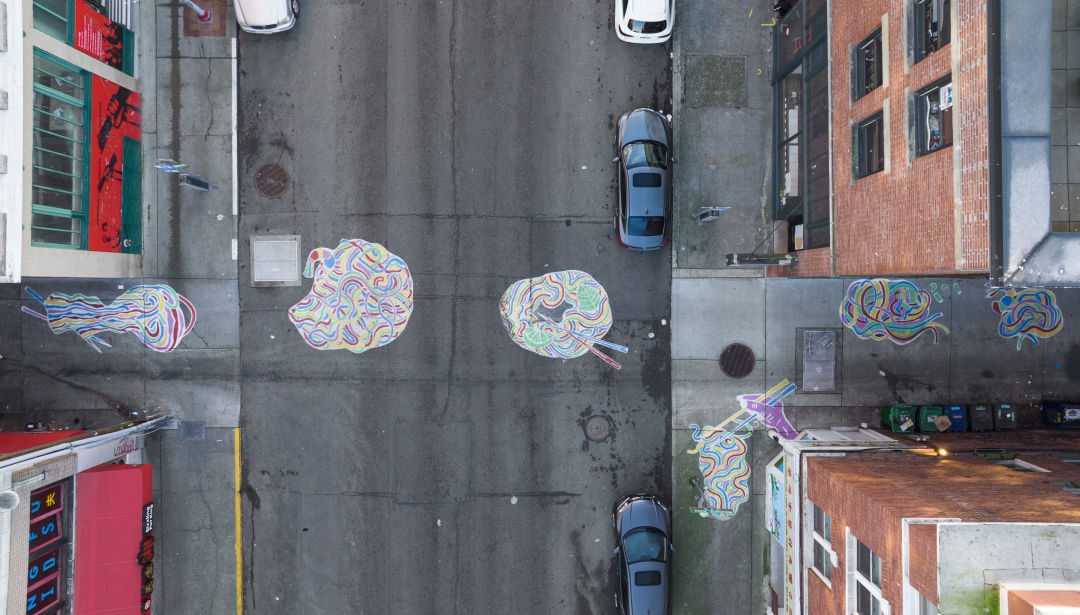
Slurp!
The bursts of color wending down Maynard Alley in the Chinatown–International District are a study in peacefully coexisting contradictions. Slurp!, a whimsical and dynamic rendering of the immigrant experience by Akira Ohiso, celebrates the complex entanglements that form identity; the pieces of the mural inform one another, and yet each vibrant cluster of noodles is separated from the other. At a single glance, their similarities are most apparent, and yet with each moment of continued examination, their differences rise to the forefront, each detail serving to distinguish one noodle cluster from another. In his artist’s statement, Ohiso writes that the clusters allude to different geographic locations, and their meandering route gestures to the nonlinear, “circuitous” path often walked by immigrants.
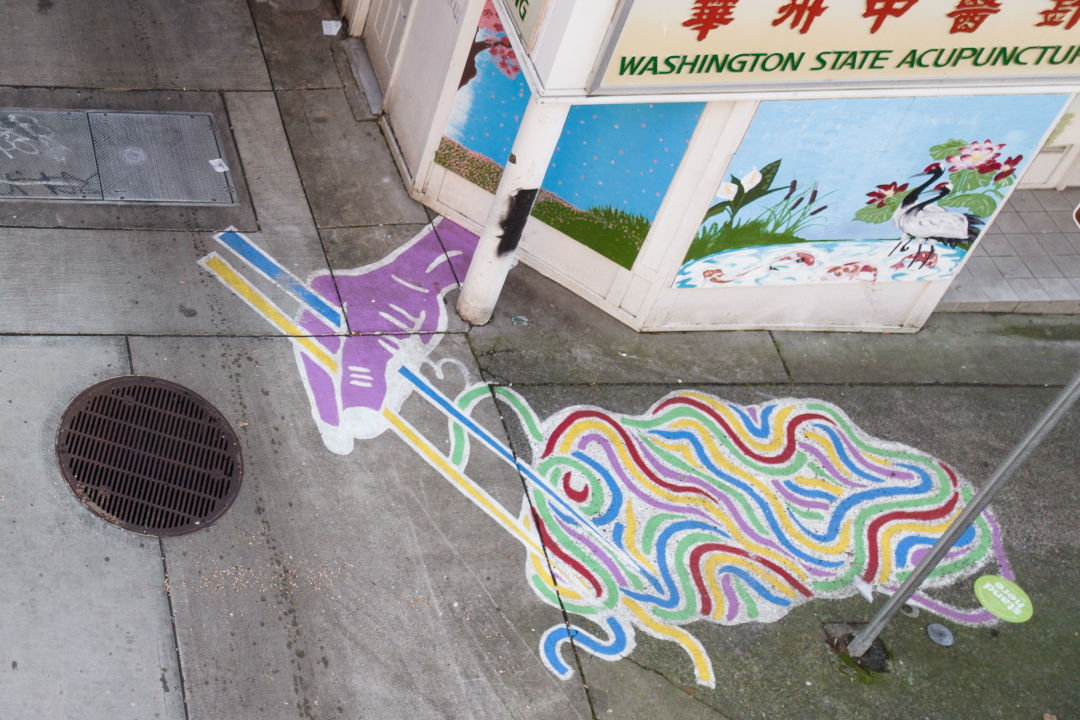
Black Lives Matter Mural
The mural stretching down East Pine Street buzzes with color and metaphor. Brought to life by communal, grassroots efforts, it’s a temporary piece turned permanent installation; the community of artists that spontaneously formed through the act of creation has, much like the mural itself, solidified into something that endures. The Vivid Matter Collective, composed of many of the artists who contributed a letter to the mural, uplifts the work of Black makers in its Capitol Hill popup shop.
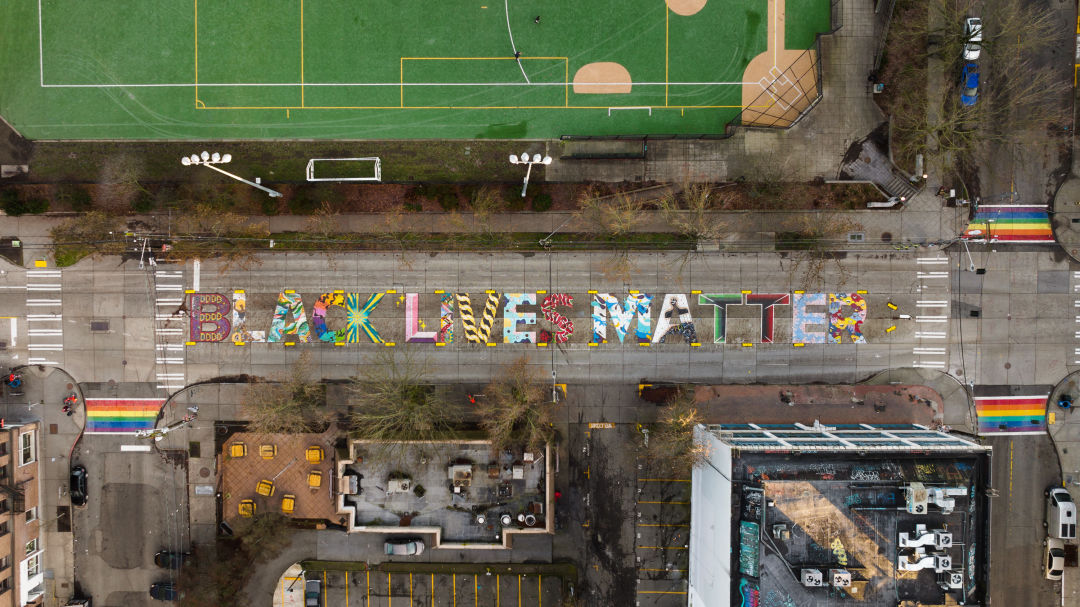
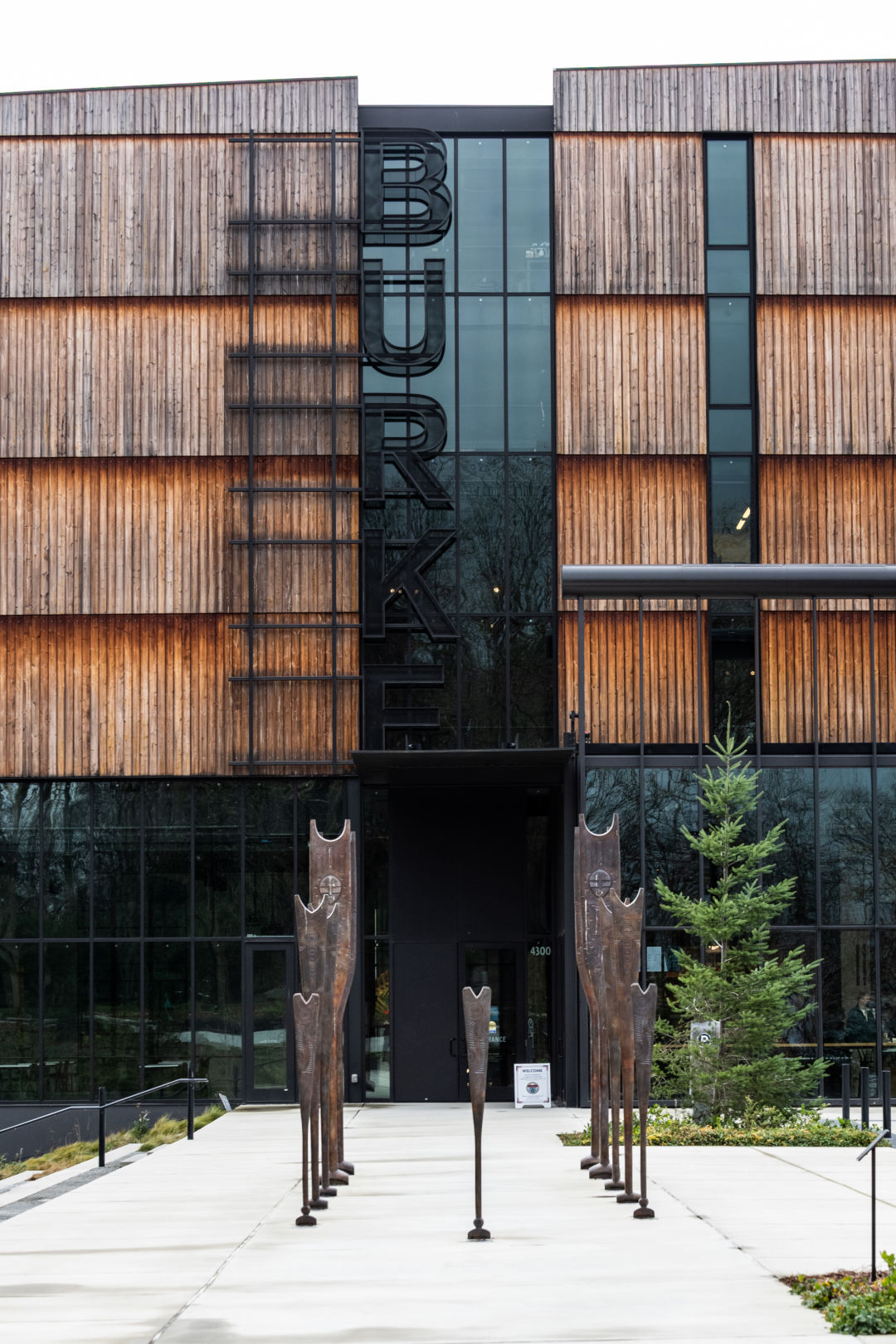
Guests from the Great River
ArtsWA, in partnership with UW, commissioned artists Tony A. (naschio) Johnson and Adam McIsaac for Guests from the Great River in 2018. Johnson, a member of the Chinook Indian Nation, has studied the artistic traditions of his ancestors for decades. He and McIsaac sculpted and carved 11 larger-than-life canoe paddles out of wood before casting them in bronze and erecting them outside the Burke’s east entrance. “The life that you live in the canoe is rich in teaching,” says Johnson’s artist statement. The salute signified by the raised canoe paddle is “full of meaning,” a gesture of respect and acknowledgment that goes far beyond a simple greeting.
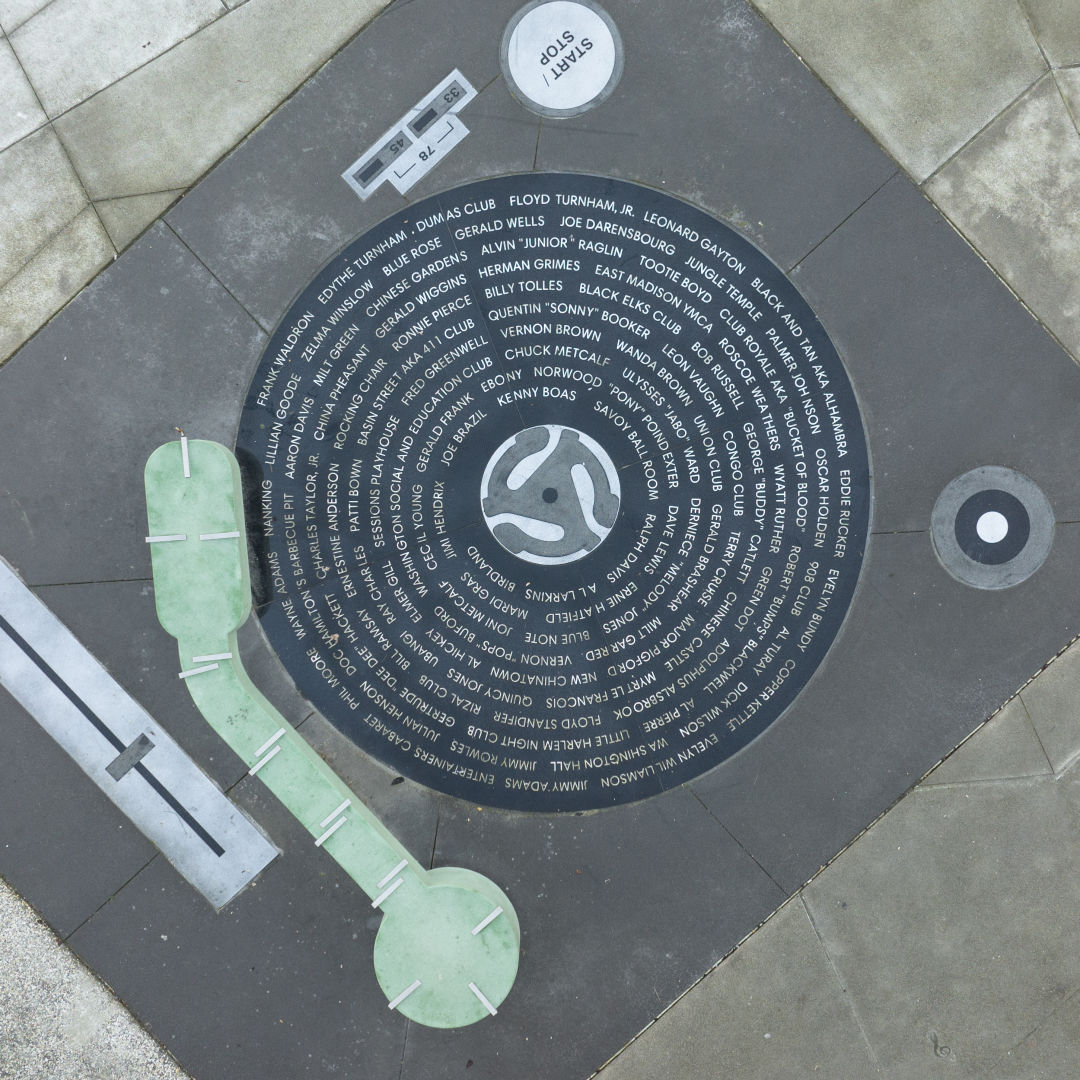
78 on Jackson and Winds of Change
The Central District, long a front line in the fight to safeguard the past from the ravenous maw of progress, recently welcomed two tributes to the area’s Black history and future. On the former grounds of the Red Apple Market, a historic community hub, Preston Hampton and found-object artist Marita Dingus created Winds of Change: We Are Still Here. Oya, the Yoruba deity of storms, Hampton says, seemed a fitting emblem for “a neighborhood going through transition, going through change.” He envisions the work as a guardian of sorts, watching over all the neighborhood’s residents, old and new. 78 on Jackson, by musician and visual artist Paul Rucker, pays homage to Jackson Street’s flourishing twentieth-century jazz scene. The sculpture, in the likeness of a record player, invites tactile engagement, the tonearm a bench to sit on while you read the names inscribed in the granite circle of the record. The immortalized monikers include lesser-known artists like Alvin “Junior” Raglin, a Seattle guitarist and bassist who toured with Duke Ellington, and the lionized like Jimi Hendrix.
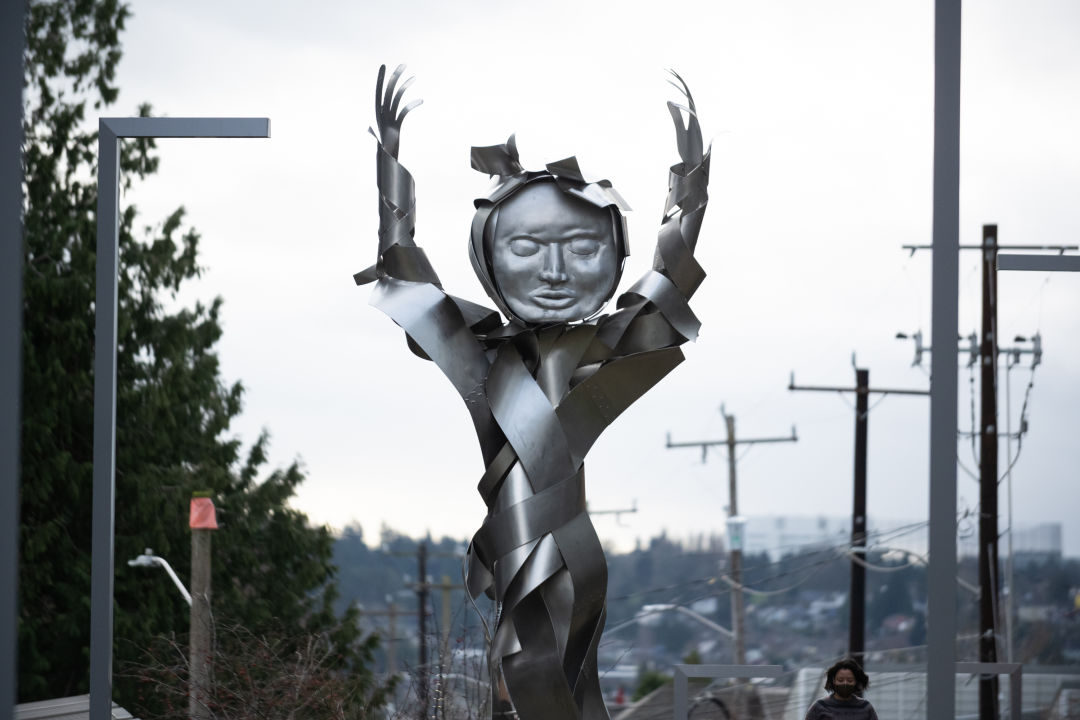
Composite image: cleverdame107 / Flickr CC (Isamu Noguchi, black Sun, 1969, Volunteer Park); Chona Kasinger (Georgia Hill, I'll Be There Soon, 2018, SoDO Track); Curtis Cronn / Flickr CC (Lewis Nasmyth, Hat 'n Boots (hat not pictured), 1954, restored 2010, Georgetown); Danler (map); Checubus (Steve Badanes, Fremont Troll, 1990); f11photo (Georgia Gerber, Rachel the Pig, 1986, Pike Place Market); S-F (Jonathan Borofsky, Hammering Man, 1991, SAM); kerochan (Alexander Calder, The Eagle, 1971, SAM Olympic Sculpture park); James Kirkikis (Charles Brown, Chief-of-All-Women pole, 1940, Pioneer Square) / shutterstock.com; Jane Sherman (Statue of Liberty Replica, 1952, repaired 2007, Alki Beach)

